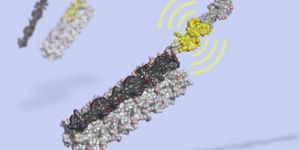ALICE Collaboration Cooks Up Hot "Quark-Gluon Soup"
In a recent report, scientists at CERN's ALICE experiment announced that they conducted the first-ever measurement of the bottomonium, a type of exotic particles generated by smashing lead (Pb) ions.
So what are the bottomonium and why are scientists after them?
Let's start with neutrons and protons, the basic components of the atomic nucleus. They are made of even smaller particles known as quarks and gluons. These days, physicists can pick apart the nucleus and get pure protons and neutrons, but never quarks and gluons because the current universe is way too "cold" for the two types of elementary particles to be freed from each other.
Dialing back the clock to a few millionths of a second after the Big Bang, however, things were drastically different back then. The universe was so dense and hot that the quarks and gluons could exist freely in the soup-like quark-gluon plasma.
Researchers at the ALICE experiment have been recreating the quark-gluon soup by smashing Pb ions together. These ions are much more massive than protons, the particles that are often smashed inside the Large Hadron Collider (LHC). Hence the name "A Large Ion Collider Experiment". A heavy atom like Pb has more neutron and proton (126 and 82 for the stable isotope Pb-208). Therefore, more quarks and gluons are expected to be knocked out of its nucleus during the collision.
Flying over ALICE (ALICE/CERN)
Since there's no direct way to probe the plasma, scientists needed to use the bottomonium, a signature entity created right after the collision, as an indication. The collective motion (or flow) of the bottomonium provides scientists a lot of information about the evolution of the quark-gluon plasma.
By observing the pairs of muons, the decayed products of bottomonium, the ALICE team was able to determine the flow of these plasma-born particles, which exhibits an elliptic shape, as a result from non-"head on" collisions.
Through further exploring this elliptic flow of the bottomonium particles, scientists hope that they can gain more insight into the infancy of our universe.
This latest research was presented in the Annual Conference on High Energy Physics organized by the European Physical Society.
Source: ZME Science









